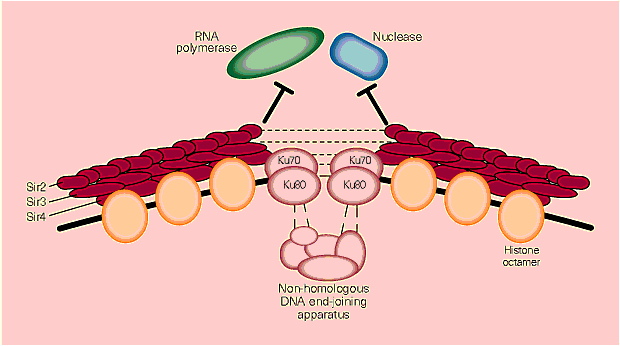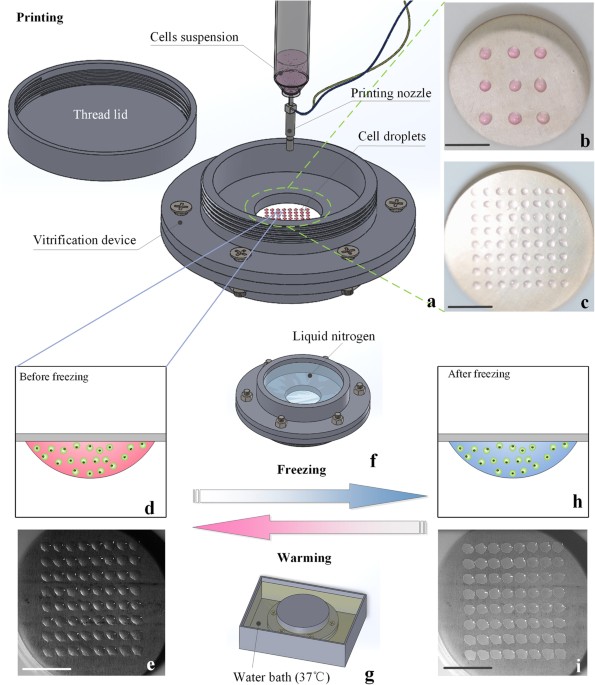
- Select a language for the TTS:
- UK English Female
- UK English Male
- US English Female
- US English Male
- Australian Female
- Australian Male
- Language selected: (auto detect) - EN
Play all audios:
Access through your institution Buy or subscribe One of the challenges facing molecular biologists is to explain how the huge amount of DNA within the eukaryotic cell nucleus is packaged
into chromatin, of which chromosomes are composed, and how this packaging affects processes such as DNA replication, transcription and the maintenance of genomic integrity. On page 900 of
this issue1, Tsukamoto, Ka to and Ikeda reveal that three yeast proteins, associated with chromatin and with transcriptional silencing, are also involved in the repair of DNA damage induced
by ionizing radiation. These results provide an unexpected dimension to silencing and chromatin organization, and may yield clues to the mechanism by which DNA double-strand breaks are
rejoined. The fundamental unit of chromatin is the nucleosome, in which DNA is wound around an octamer of the core histones H2A, H2B, H3 and H4. Interactions with linker histones and various
non-histone proteins provide further DNA compaction, which, in defined regions of the genome, culminates in the highly condensed state termed heterochromatin. Notable features of
heterochromatin are that it is generally transcriptionally silent, is replicated late in S-phase of the cell cycle, is localized to the nuclear periphery, and is relatively inaccessible to
DNA-modifying enzymes2. This is a preview of subscription content, access via your institution ACCESS OPTIONS Access through your institution Subscribe to this journal Receive 51 print
issues and online access $199.00 per year only $3.90 per issue Learn more Buy this article * Purchase on SpringerLink * Instant access to full article PDF Buy now Prices may be subject to
local taxes which are calculated during checkout ADDITIONAL ACCESS OPTIONS: * Log in * Learn about institutional subscriptions * Read our FAQs * Contact customer support REFERENCES *
Tsukamoto, Y., Kato, J. -i. & Ikeda, H. _Nature_ 388, 900–903 (1997). Article ADS CAS Google Scholar * Grunstein, M. _Curr. Opin. Cell Biol._ 9, 383–387 (1997). Google Scholar *
Hecht, A., Laroche, T., Strahl-Bolsinger, S., Gasser, S. M. & Grunstein, M. _Cell_ 80, 583–592 (1995). Google Scholar * Lieber, M. R., Grawunder, U., Wu, X. & Yaneva, M. _Curr.
Opin. Genet. Dev._ 7, 99–104 (1997). Google Scholar * Jackson, S. P. & Jeggo, P. A. _Trends Biochem. Sci._ 20, 412–415 (1995). Google Scholar * Moretti, P., Freeman, K., Coodly, L.
& Shore, D. _Genes Dev._ 8, 2257–2269 (1994). Google Scholar * Palladino, F._et al._ _Cell_ 75, 543–555 (1993). Google Scholar * Porter, S. E._et al._ _Nucleic Acids Res_. 24, 582–585
(1996). Google Scholar * Boulton, S. J. & Jackson, S. P. _Nucleic Acids Res._ 24, 4639–4648 (1996). Google Scholar Download references AUTHOR INFORMATION AUTHORS AND AFFILIATIONS *
Wellcome/CRC Institute, and the Department of Zoology, University of Cambridge, Tennis Court Road, CB2 1QR, Cambridge, UK Stephen P. Jackson Authors * Stephen P. Jackson View author
publications You can also search for this author inPubMed Google Scholar RIGHTS AND PERMISSIONS Reprints and permissions ABOUT THIS ARTICLE CITE THIS ARTICLE Jackson, S. Silencing and DNA
repair connect. _Nature_ 388, 829–830 (1997). https://doi.org/10.1038/42136 Download citation * Issue Date: 28 August 1997 * DOI: https://doi.org/10.1038/42136 SHARE THIS ARTICLE Anyone you
share the following link with will be able to read this content: Get shareable link Sorry, a shareable link is not currently available for this article. Copy to clipboard Provided by the
Springer Nature SharedIt content-sharing initiative
:max_bytes(150000):strip_icc():focal(299x0:301x2)/kris-jenner-01-600-1-8d3a8967e02e4871a48a15a05ddf28a8.jpg)






